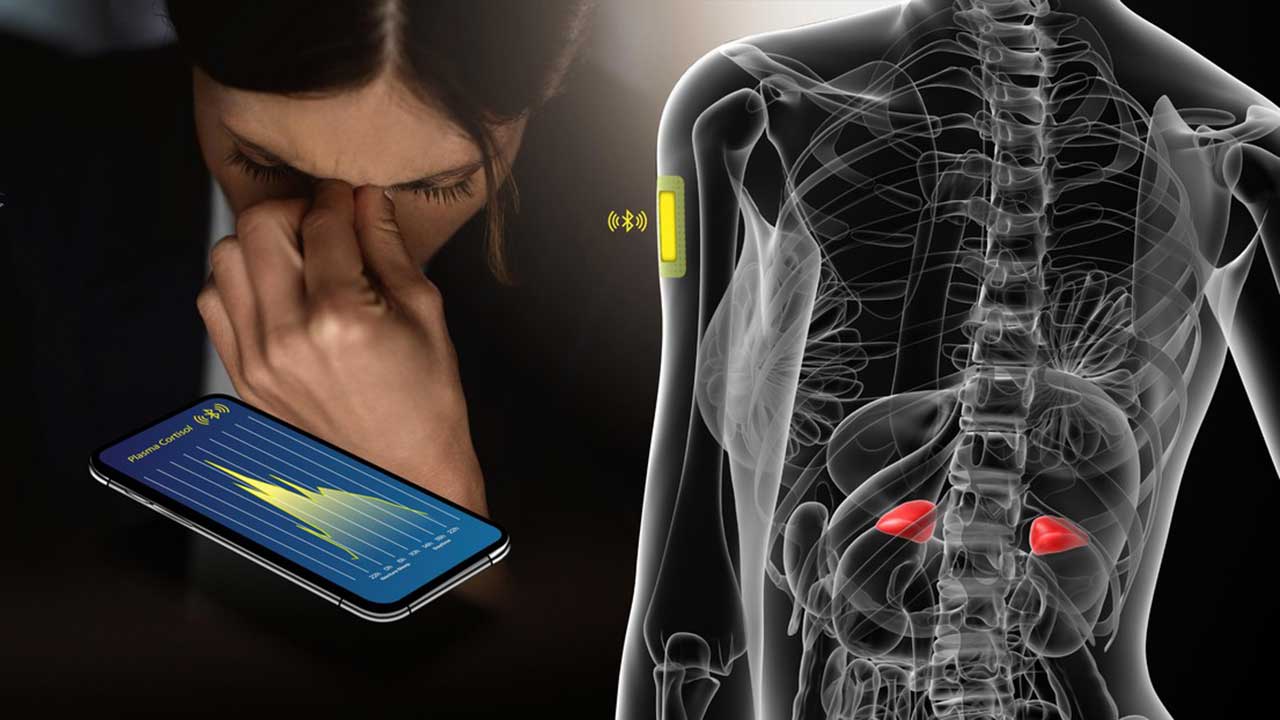
Chronic stress negatively impacts human health. Under pressure, the adrenal gland cortex of the kidney releases cortisol into the bloodstream.
Cortisol is known as the stress hormone.
Until now, there has been no way to measure stress levels objectively.
A recent study by the EPFL engineers in collaboration with startup Xsensio has made that possible. They developed a small wearable sensor to quasi-continually measure the concentration of cortisol in pateint’s sweat.
Adrian Ionescu, head of Nanolab, said, “Cortisol can be secreted on impulse – you feel fine, and suddenly something happens that puts you under stress, and your body starts producing more of the hormone.”
“While cortisol helps our bodies respond to stressful situations, it’s a double-edged sword. According to a circadian rhythm, it’s usually secreted throughout the day, peaking between 6 am and 8 am and then gradually decreasing into the afternoon and evening. But in people who suffer from stress-related diseases, this circadian rhythm is completely thrown off. And if the body makes too much or not enough cortisol, that can seriously damage an individual’s health, potentially leading to obesity, cardiovascular disease, depression or burnout.”
Cortisol can be found in saliva, urine, and sweat. In this study, scientists decided to focus on sweat as the detection fluid and developed a wearable smart patch with a miniaturized sensor.
The patch is equipped with a transistor and a highly sensitive electrode made from graphene. The graphene is functionalized through aptamers, short fragments of single-stranded DNA or RNA that can bind to specific compounds.
The aptamer in the EPFL patch carries a negative charge; when it comes into contact with cortisol, it immediately captures the hormone, causing the strands to fold onto themselves and bringing the charge closer to the electrode surface. The device then detects the charge and can measure the cortisol concentration in the wearer’s sweat.
Ionescu said, “So far, no other system has been developed for monitoring cortisol concentrations continuously throughout the circadian cycle. That’s the key advantage and innovative feature of our device. Because it can be worn, scientists can collect quantitative, objective data on certain stress-related diseases. And they can do so in a non-invasive, precise and instantaneous manner over the full range of cortisol concentrations in human sweat.”
Esmeralda Megally, CEO of Xsensio, says: “The joint R&D team at EPFL and Xsensio reached an important R&D milestone in the detection of the cortisol hormone. We look forward to testing this new sensor in a hospital setting and unlocking new insight into how our body works.”
Scientists set up a bridge project with Prof. Nelly Pitteloud, chief of endocrinology, diabetes, and metabolism at the Lausanne University Hospital (CHUV), for her staff to try out the continuous cortisol-monitoring system on human patients. These trials will involve healthy individuals and people suffering from Cushing’s syndrome (when the body produces too much cortisol), Addison’s disease (when the body doesn’t have enough), and stress-related obesity. The engineers believe their sensors can contribute to the study of the physiological and pathological rhythms of cortisol secretion.
Ionescu said, “So what about psychological diseases caused by too much stress? For now, they are assessed based only on patients’ perceptions and states of mind, which are often subjective.”
“So having a reliable, wearable sensor can help doctors objectively quantify whether a patient is suffering from depression or burnout, for example, and whether their treatment is effective. What’s more, doctors would have that information in real-time. That would mark a major step forward in the understanding of these diseases.”
Esmeralda Megally, CEO of Xsensio, says, “What’s more, doctors would have that information in real-time. That would mark a major step forward in the understanding of these diseases. And who knows, maybe one day this technology will be incorporated into smart bracelets. The next phase will focus on product development to turn this exciting invention into a key part of our Lab-on-SkinTM sensing platform and bring stress monitoring to next-generation wearables.”
Journal Reference:
- Sheibani, S., Capua, L., Kamaei, S. et al. Extended gate field-effect-transistor for sensing cortisol stress hormone. Commun Mater 2, 10 (2021). DOI: 10.1038/s43246-020-00114-x
Continue reading A new wearable sensing chip can measure the stress hormone in human sweat on Tech Explorist.
0 comments:
Post a Comment